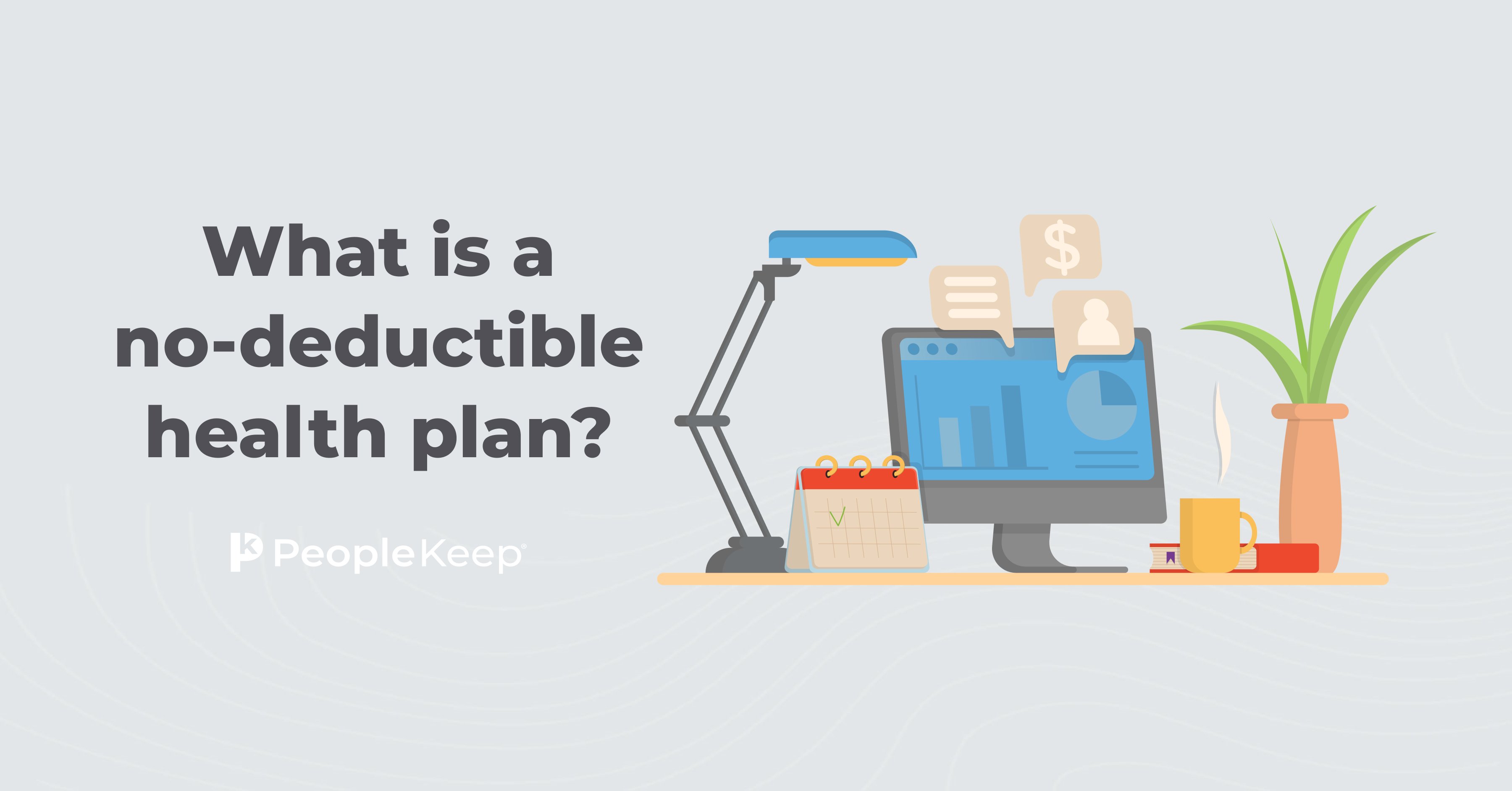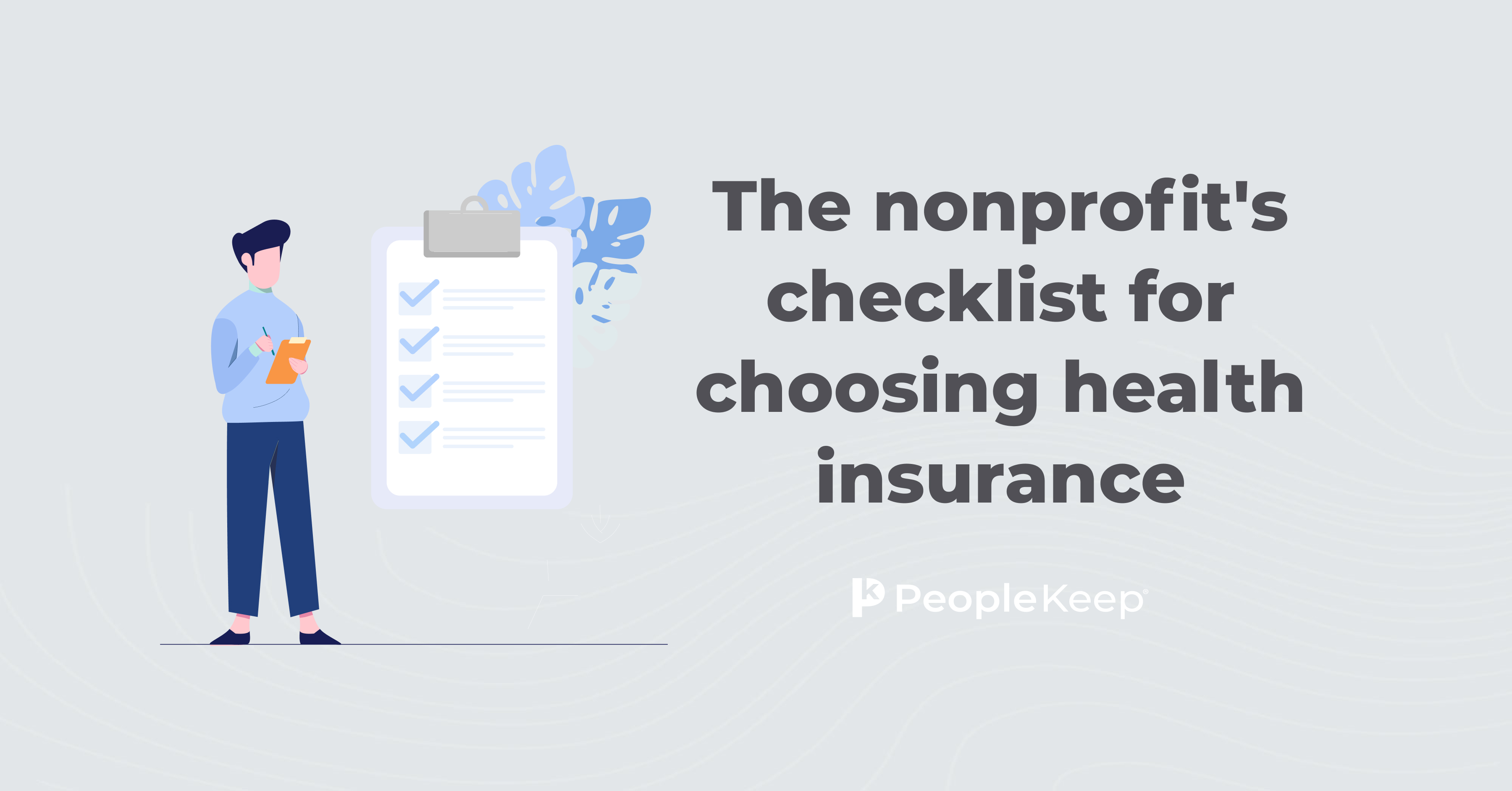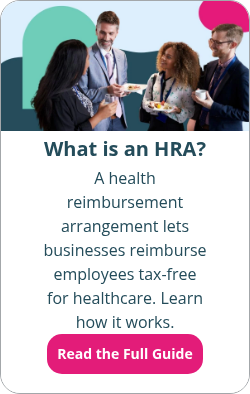What is a consumer driven health plan (CDHP)?
By Elizabeth Walker on February 12, 2024 at 9:30 AM
An employer’s health insurance benefits are a serious consideration for job seekers. But, offering traditional group insurance can be expensive and tricky. As group plan rates continue to rise for many businesses, more employers are expressing interest in other long-term health plan options.
One solution is a consumer-driven health plan (CDHP). A CDHP gives your employees more control over their healthcare and network of doctors while giving you more control over your budget.
This article will delve into consumer-driven health plans, including common types and the advantages of these popular benefits.
Takeaways from this blog post:
- CDHPs are a cost-effective supplement to traditional group health insurance plans for business employers. They offer several benefits, such as lower premium costs, reduced healthcare spending, increased employee satisfaction, and tax advantages.
- CDHPs commonly include pre-tax health funds, such as health savings accounts (HSA), health reimbursement arrangements (HRA), and flexible spending accounts (FSA) that employers can pair with insurance.
- Integrated HRAs offer the most customization options for employers and allow small employers to control healthcare spending. But CDHP alternatives like the qualified small employer HRA (QSEHRA) and individual coverage HRA (ICHRA) could be better choices.
What is a consumer-driven health plan?
A consumer-driven health plan—also known as a consumer-directed health plan—is a quality care health plan where pre-tax dollars directly pay for portions of your employees’ healthcare services that insurance doesn’t cover.
A CDHP typically has two components: a high deductible health plan (HDHP) and a pre-tax fund employees can use to pay for health services that the HDHP doesn't cover.
Initially, employers offered these plans to help reduce the amount of money employers paid for health coverage. But now, many employers highly regard CDHPs for empowering employees to make their own decisions about their medical care.
CDHPs include an employer-sponsored group plan and a health spending account or arrangement that allows employees to use pre-tax money to help pay for qualified out-of-pocket costs, such as copayments and annual deductibles.
However, since the introduction of CDHPs, personalized benefits in the form of pure defined contribution health plans have become an increasingly popular option among small and midsized organizations.
This is where you offer health benefits through a monthly pre-tax allowance to reimburse employees for individual health plan premiums and more than 200 eligible medical expenses. You don't offer a group health plan with these types of healthcare plans, helping you save even more on health benefit costs.
What are the benefits of a consumer-driven health plan?
Offering various employee benefits is critical as they can significantly affect your recruiting and retention efforts. But according to KFF1, the average annual premiums for employer-sponsored health insurance in 2023 are $8,435 for single coverage and $23,968 for family coverage.
Large organizations are at an advantage because they can typically afford to provide better health benefits despite high premium costs. But, the high costs for small business employers may create a financial burden. Luckily, these employers have additional options.
CDHPs are an excellent way for you to offer health benefits to employees at an affordable cost. They have become popular benefit options for many businesses since they are easier to budget for and encourage employees to make informed decisions regarding their healthcare, which can improve your retention rate.
Other benefits of offering consumer-driven health insurance include:
- Saving on premium costs: The monthly premium cost tends to be lower for CDHPs than different types of plans, such as low deductible preferred provider organization (PPO) plans.
- Reducing medical care costs: Overall healthcare spending is lower than traditional insurance plans because participants take on more out-of-pocket medical costs.
- Increasing employee morale: Employee satisfaction improves because employees have more choices on how they want to handle their healthcare.
- Tax benefits: As long as the IRS considers the contributions a qualified medical expense, the money taken from a CDHP account is free of income tax.
- Potential for annual rollover: Certain CDHP plan funds can roll over annually at the employer’s discretion. Other accounts stay with the employee for future use, even if they leave the company.
Traditional health benefits are one-size-fits-all, which means you choose one or two employer plans you can afford that you believe your employees will like. However, consumerized employee benefits, like CDHPs, give decision-making power to your employees, ultimately providing more flexibility and personalization.
What are the common types of consumer-driven health plans?
CDHPs come in wide variations but typically include a pre-tax health fund. The main difference between the different types of health funds is whether the employer or employee funds them.
However, they all emphasize encouraging employees to take a more active role in choosing their healthcare and network of providers, which is especially important for sicker patients with chronic conditions.
The three main types of pre-tax health funds associated with consumer-driven plans include:
- Health savings account (HSA): An HSA is a tax-advantaged employee-owned account set up to pay for healthcare expenses with a qualifying HDHP. Employers and employees can contribute to an HSA up to an annual maximum limit.
- Integrated health reimbursement arrangement (HRA): Often confused as a health reimbursement account, an HRA is a tax-advantaged health benefit that allows you to reimburse your active employees for their medical costs. Employees can’t contribute to an HRA—only employers can make pre-tax contributions.
- An integrated HRA, or group coverage HRA (GCHRA), can integrate with a group health plan. This allows you to reimburse employees for their out-of-pocket medical costs the group plan doesn’t cover.
- Flexible spending account (FSA): An FSA is an employer-owned tax-advantaged account that provides employees with a set amount of funds to use during the year and can pair with any type of health insurance plan.
The most customizable of these three consumer-driven healthcare options is the HRA. HRAs level the employee benefits playing field for small employers by allowing them to control healthcare spending. However, none of these options allow you to reimburse employees for their share of insurance premiums.
That’s where other types of HRAs PeopleKeep offers can help.
Integrated HRA
As mentioned above, one type of CDHP is an integrated HRA—also known as a group coverage HRA (GCHRA). A GCHRA is a health benefit for employers that want to supplement any group health insurance plan, not just an HDHP.
Using a GCHRA, employers can set a budget-friendly reimbursement allowance for employees to use each month toward out-of-pocket expenses that the group health plan doesn't fully pay for. However, participants can’t use their GCHRA allowance on their employee premiums.
The GCHRA has different employee class options you can use to customize your benefit even further. For example, suppose you’re switching to an HDHP from a more traditional plan for premium savings. In that case, a GCHRA can cover the additional out-of-pocket costs for your employees, and you can offer different allowance amounts to your employees for greater flexibility.
Your business will save money with a high-deductible plan, and your employees will still have comprehensive coverage and access to various networks of doctors.
Qualified small employer HRA (QSEHRA)
A qualified small employer HRA (QSEHRA) is a flexible benefit for employers with fewer than 50 full-time equivalent employees (FTEs) who don’t offer group health insurance, making it a pure-defined contribution health plan.
With a QSEHRA, you set an allowance up to the maximum annual contribution limits and provide tax-free reimbursement for your employees’ qualified medical expenses, such as individual health insurance premiums, preventive services, prescription drugs, doctor visits, and more.
Reimbursements are free of income taxes for employees—as long as their insurance policy meets minimum essential coverage (MEC). Employers' contributions are fully tax-deductible and not subject to payroll taxes, making a QSEHRA a great cost-saving solution. Better yet, unused contributions stay with you if an employee leaves your company.
Individual coverage HRA (ICHRA)
An individual coverage HRA (ICHRA) is another pure-defined contribution health plan. It’s for employers of all sizes and functions, much like the QSEHRA, though with greater flexibility regarding plan design.
With an ICHRA, you offer your employees a monthly allowance, they choose and pay for individual health insurance coverage and other qualified expenses, and you reimburse them up to their allowance amount.
The significant difference between an ICHRA and a QSEHRA is that the ICHRA comes with 11 employee classes employers can use to structure benefit eligibility and allowance amounts.
These classes add greater control and flexibility to your organization’s health benefit while your employees save money on their monthly premiums—a perk that can increase employee satisfaction.
With a QSEHRA or ICHRA, you can save money compared to group health insurance and CDHPs. That’s because you only reimburse employees when they submit reimbursement requests for eligible expenses. There’s no need to pre-fund an account or purchase a group health insurance plan. And any unused funds remain with you at the end of the plan year, contributing to even greater savings.
Conclusion
Unlike traditional health plans that attempt to provide a universal solution for the group of employees, a consumer-directed health plan enables small businesses to offer a true benefit and control healthcare spending while meeting the unique needs of each employee.
Finding a way to make your health benefit affordable is critical for a small business—and consumerization is a great place to start. Whether you’re looking for an integrated or stand-alone HRA to help your employees pay for their medical services, PeopleKeep’s HRA administration software makes it easy to set up and manage your benefit in minutes.
This article was originally published on February 2, 2021. It was last updated on February 12, 2024.
1. https://www.kff.org/report-section/ehbs-2023-summary-of-findings/
Check out more resources
See these related articles

What is a no-deductible health plan?
Wondering what a no-deductible health plan is? Find out how these insurance options can provide comprehensive coverage without the burden of deductibles.

Common types of health insurance plans
Learn the pros and cons of the most common types of health insurance plans, such as PPOs, HMOs, HSA-qualified plans, indemnity plans, and alternatives.

The nonprofit’s checklist for choosing health insurance
Are you a nonprofit organization in need of health insurance? Look no further! Our checklist offers guidance on choosing the best plan for your needs.



